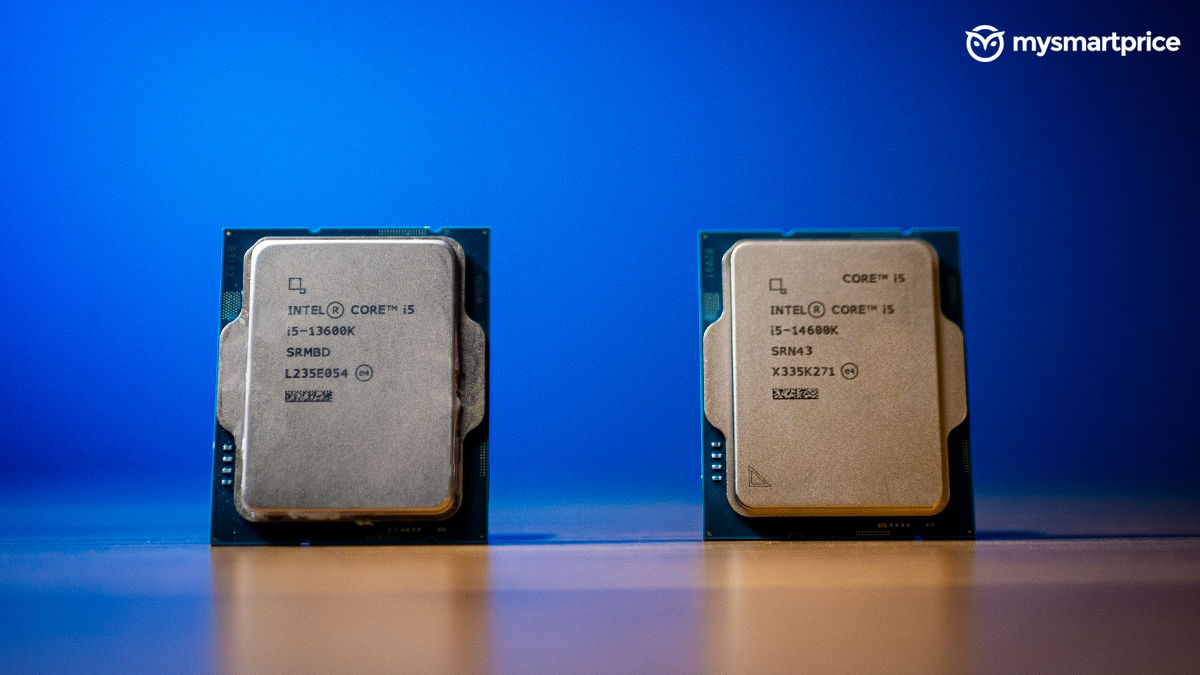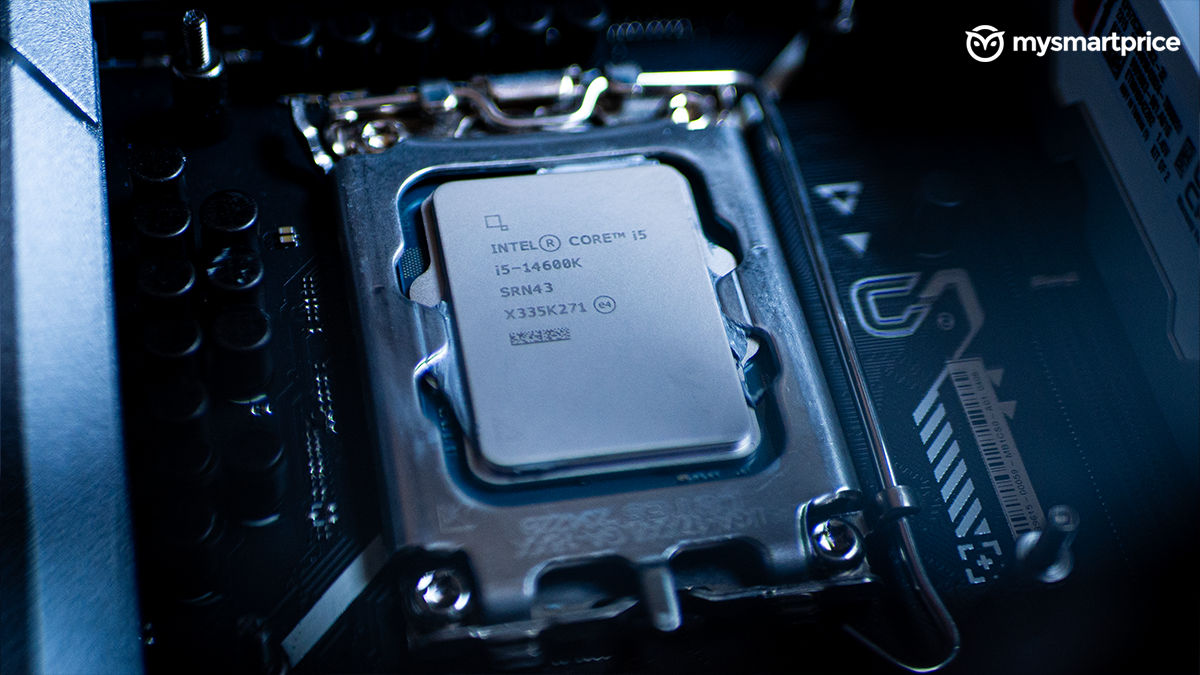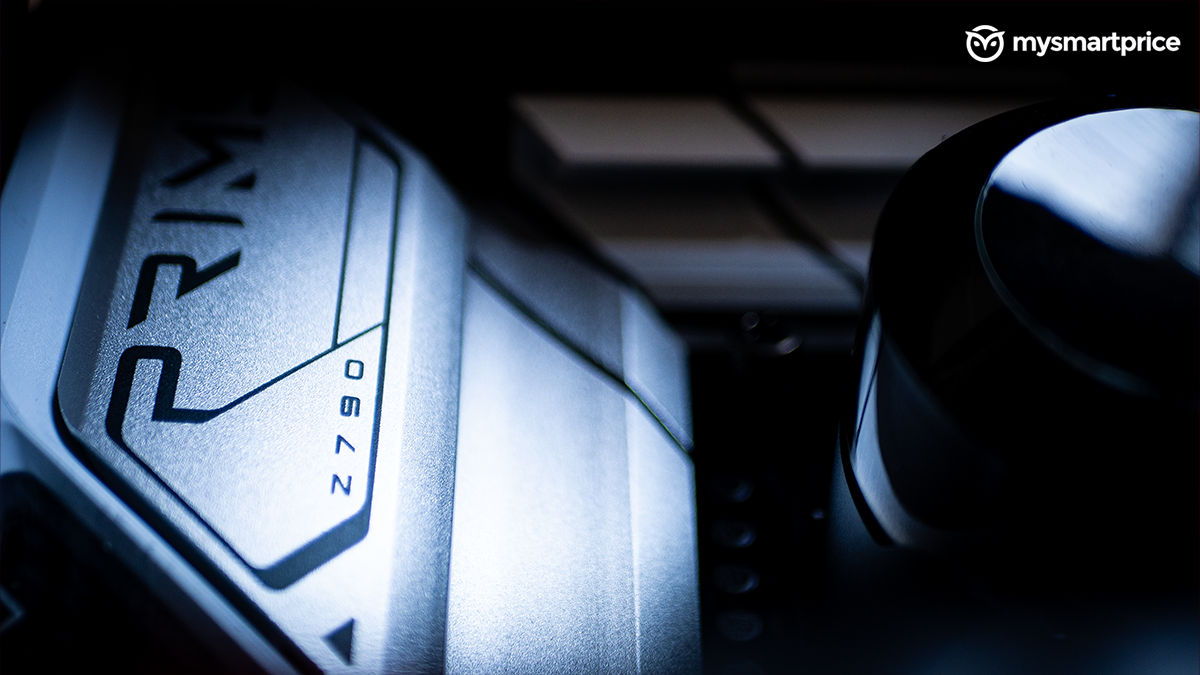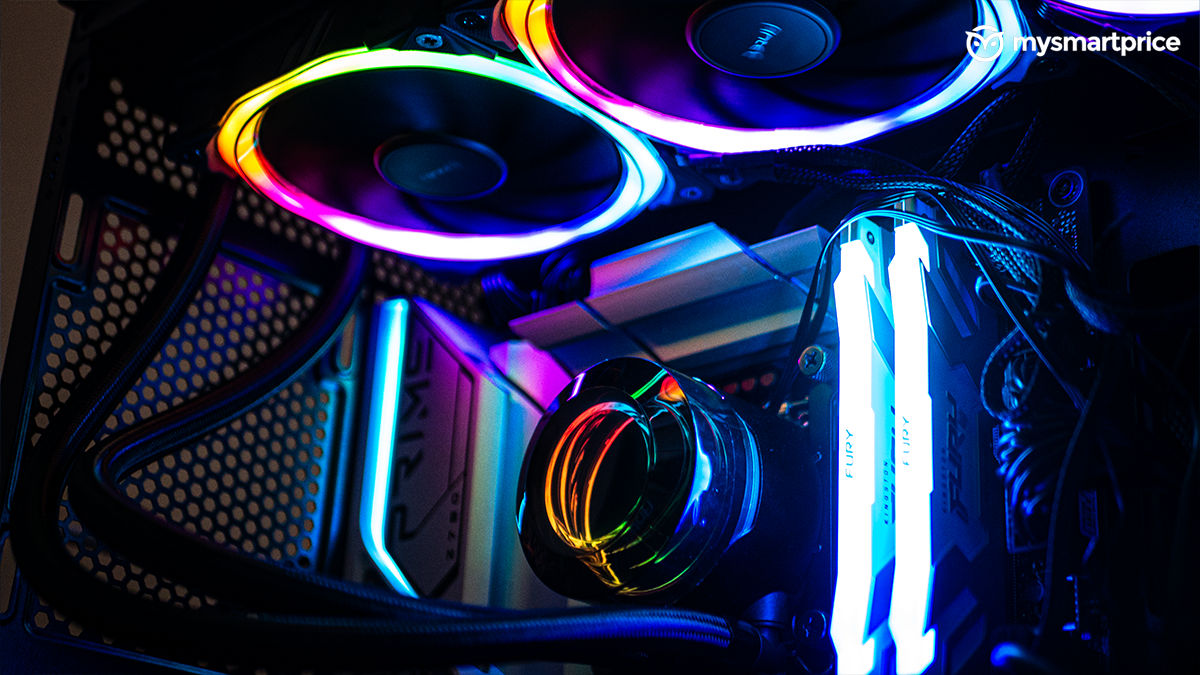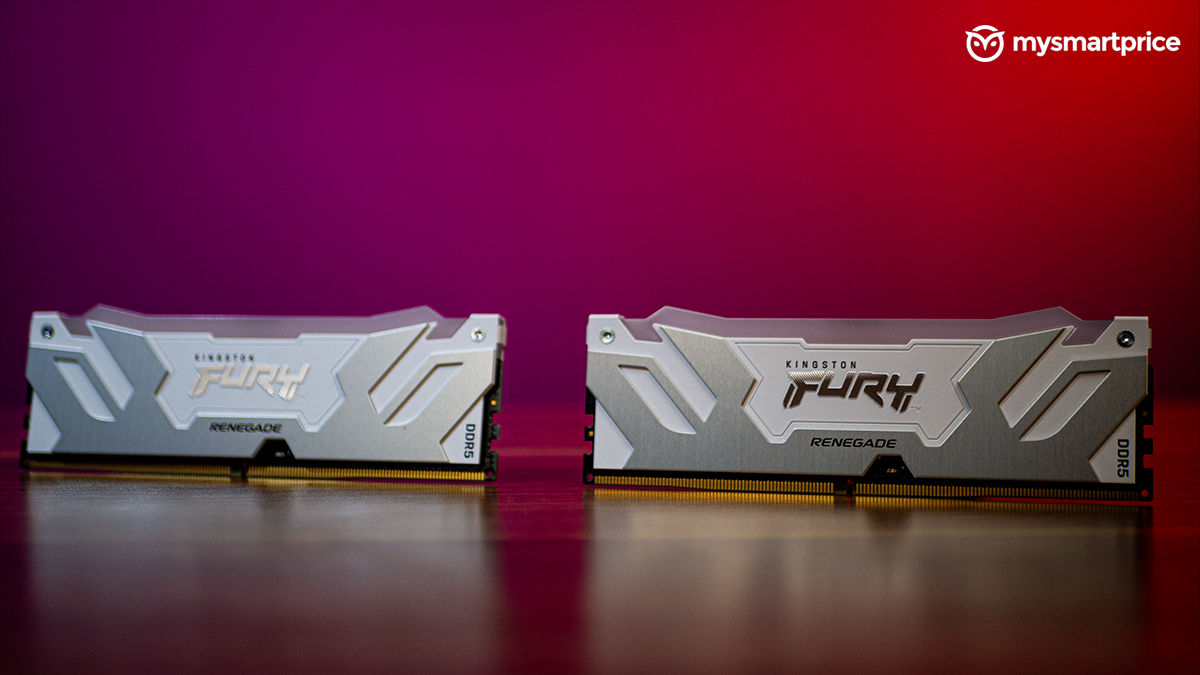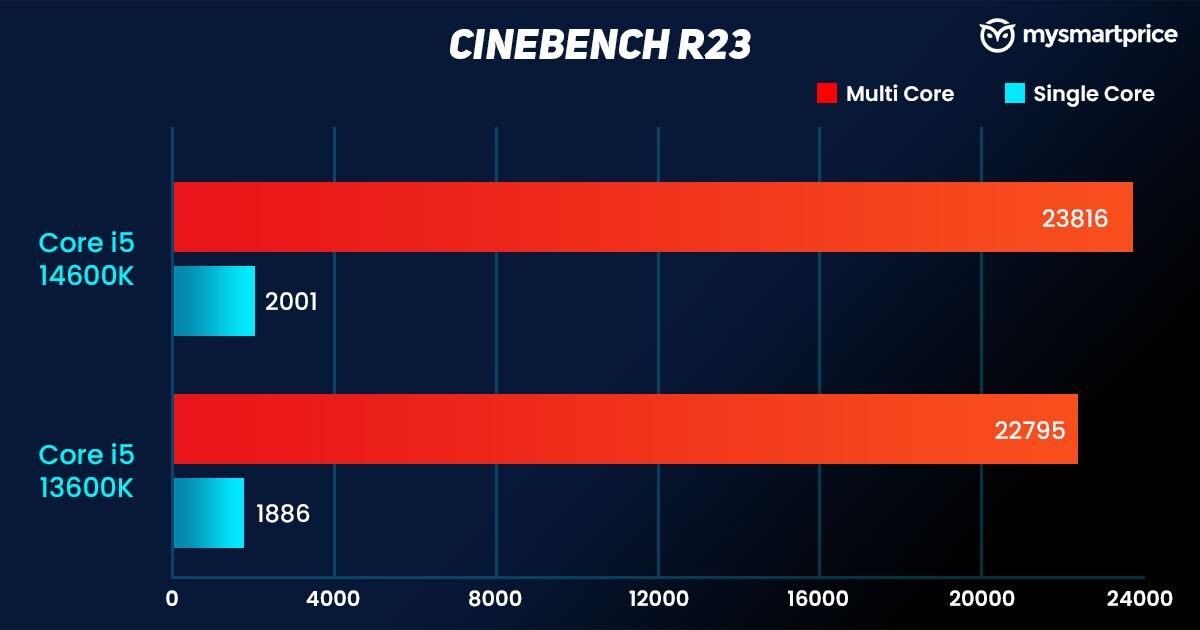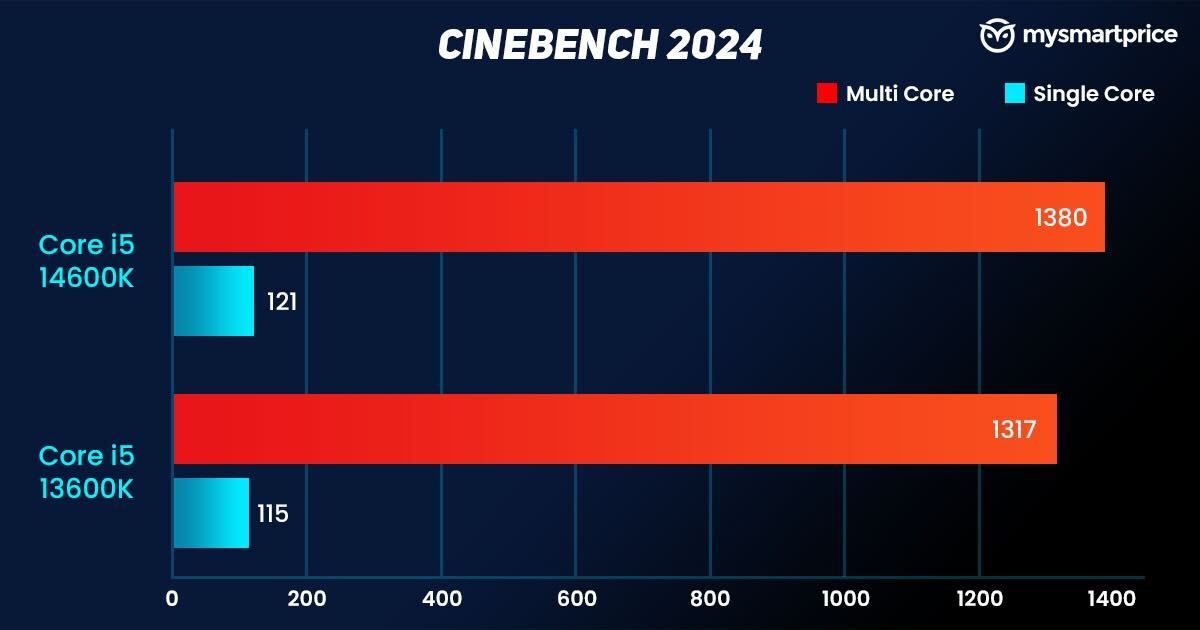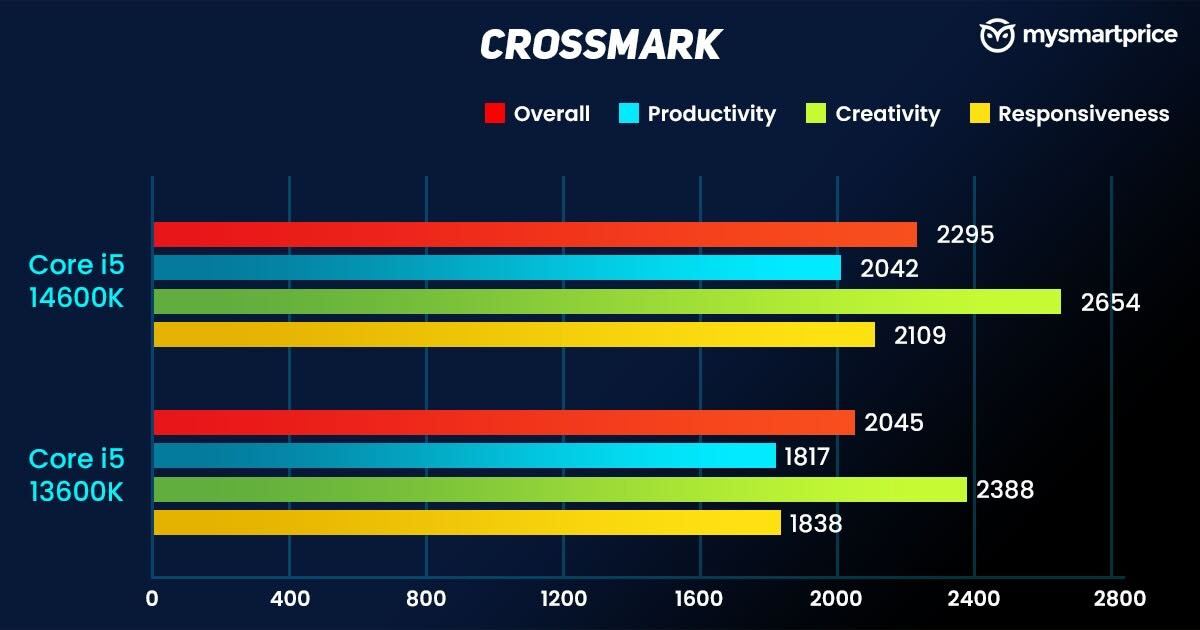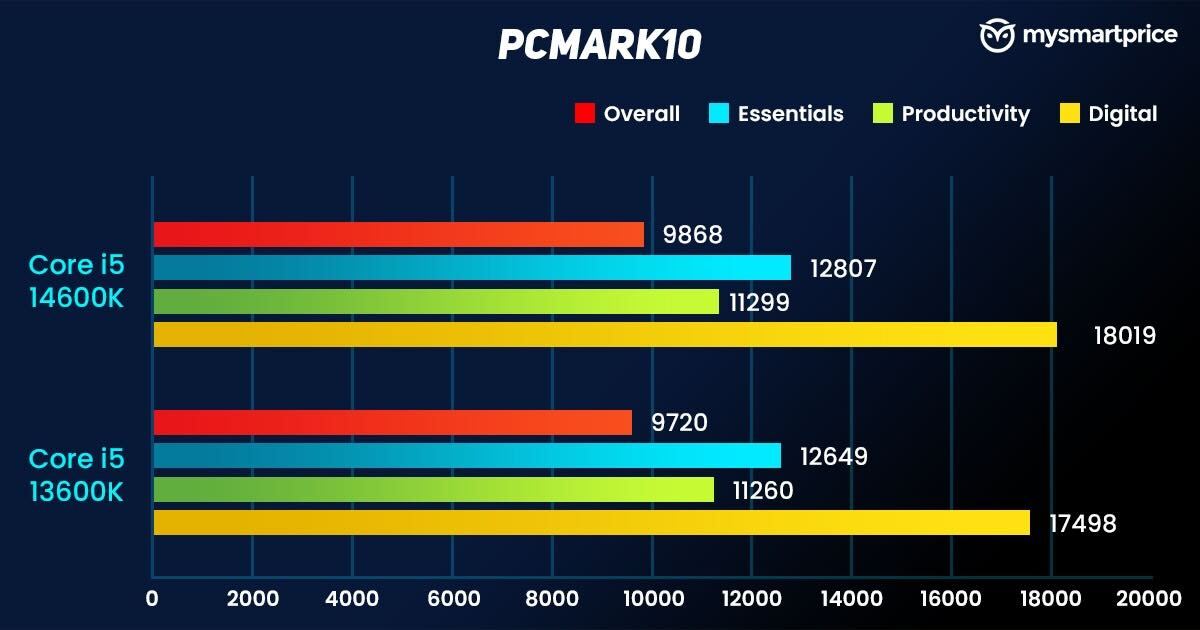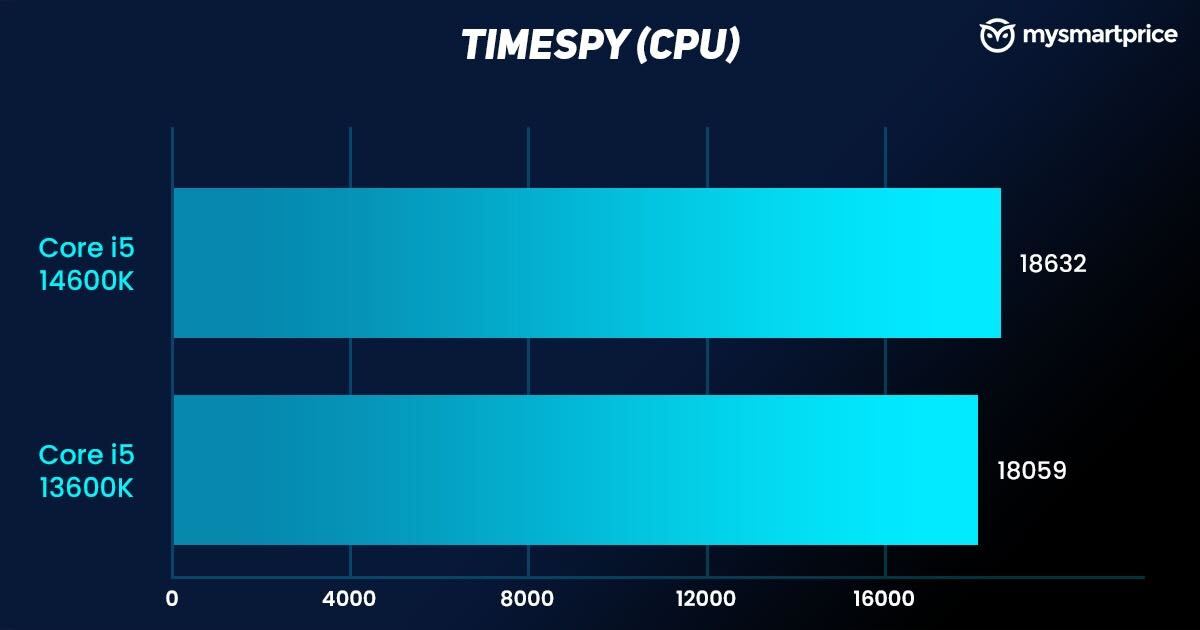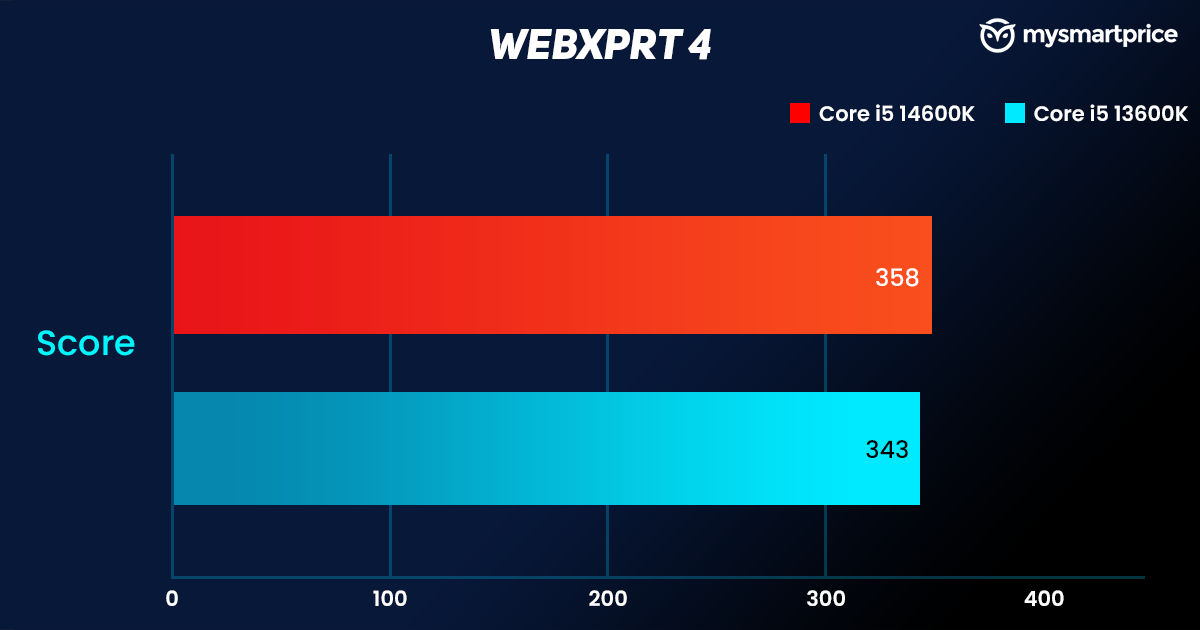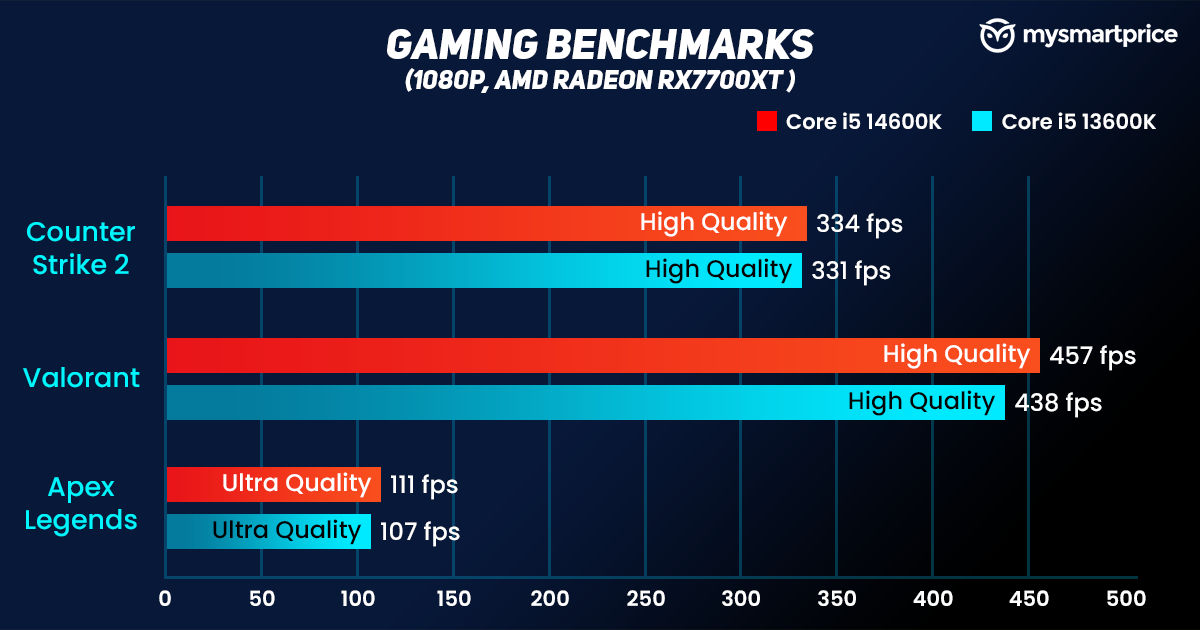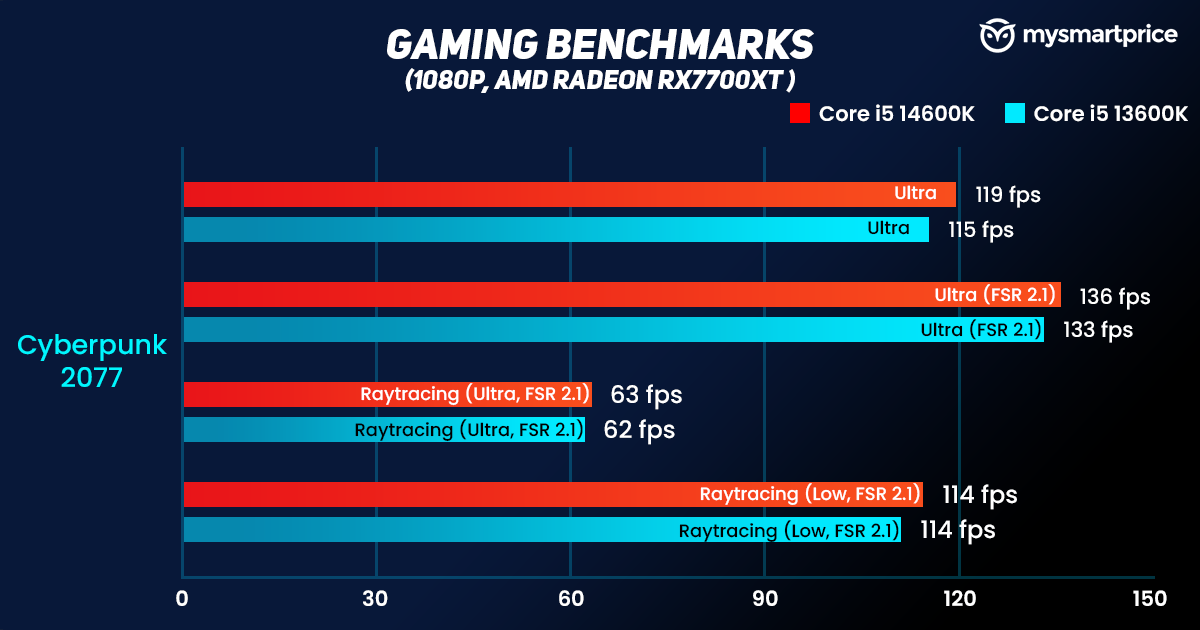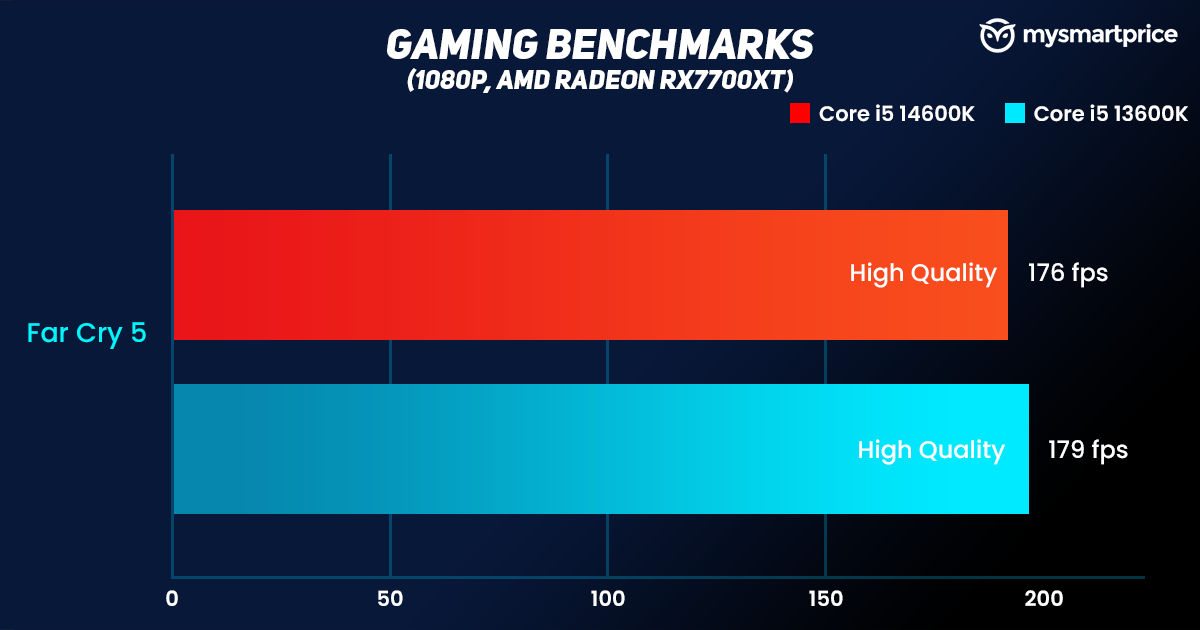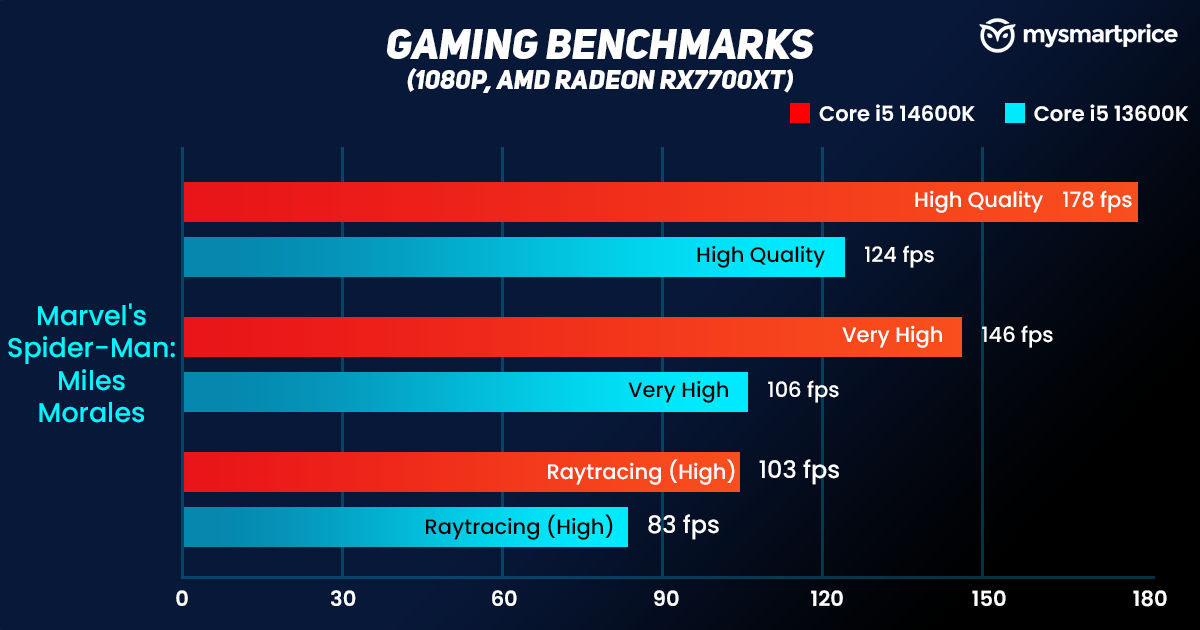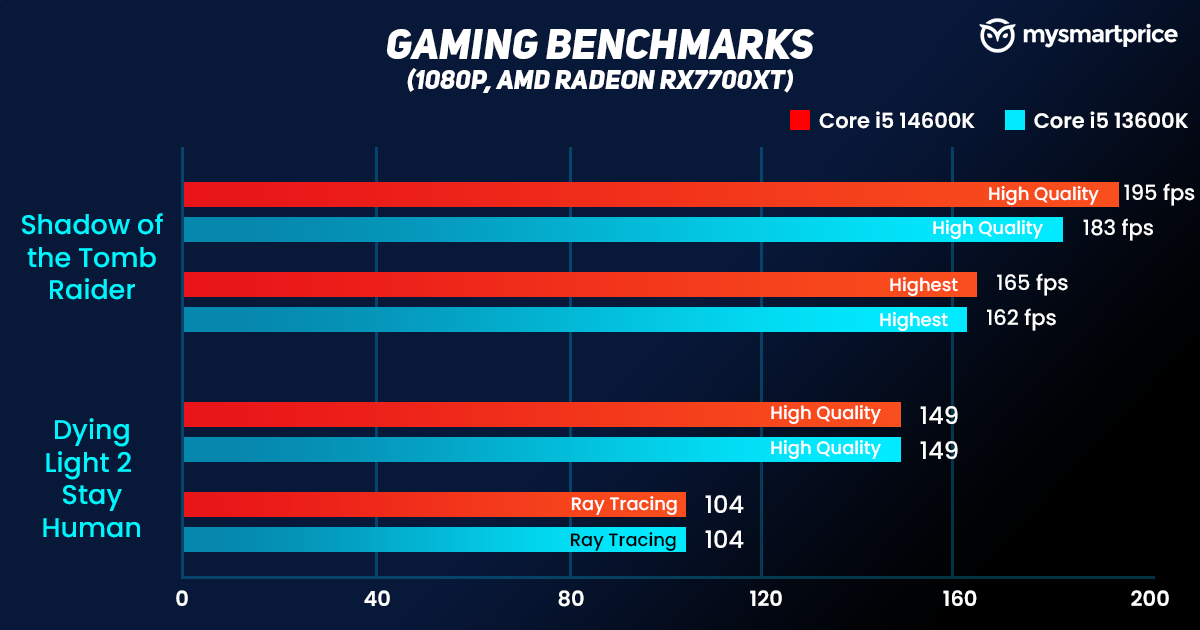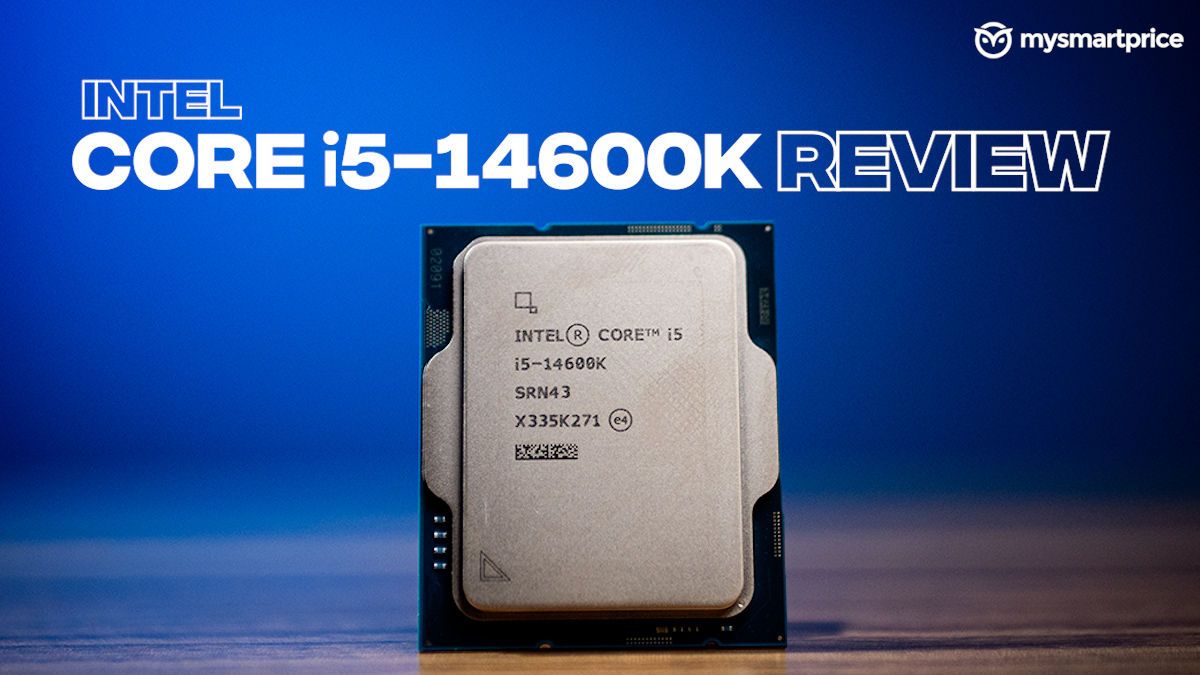
The mantra of Intel’s Core i5 processors is simple – provide good performance while undercutting its Core i7 and i9 siblings. That explains the popularity of the 13th generation ‘Raptor Lake’s Core i5-13600K among gamers on a budget. But things are a bit different with its successor. Codenamed ‘Raptor Lake Refresh’, the Core i5-14600K is, in simplest terms, an overclocked i5-13600K. But does that little tweak here and there justify a tiny price bump? Find out in our review.
Intel Core i5-14600K
Rs 34,999What Is Good?
- Value for money and all-rounder processor
- Excellent single and multi-threaded performance
- Compatible with previous-gen sockets (LGA1700)
- Good gaming performance
- Compatible with PCI Express 5.0
- Support for both DDR4 and DDR5 memory
What Is Bad?
- Minor upgrades over previous gen
- Can get power-hungry
Intel Core i5-14600K Review: Pricing and availability in India
The price difference between the i5-13600K and i5-14600K is similar to their performance differences — marginal. The exact pricing, as of writing this review can be seen in the table below. This includes listings from MDComputers and Amazon India. Keep in mind that these prices keep fluctuating.
| Platforms | Intel Core i5-13600K | Intel Core i5-14600K |
| MDComputers | Rs 29,185 | Rs 30,379 |
| Amazon India | Rs 31,006 | Rs 34,999 |
With the launch of the newer generation, the i5-13600K will most likely get a more discounted price in the coming days. The performance difference between the two might not be worth the extra bucks, as we will get into that further below.
Intel Core i5-14600K Review: Architecture and specifications
As mentioned above, the i5-14600K is a refresh of the previous gen. This means that it runs on the same architecture as before but with a slight increase in the frequencies. The LGA1700 socket is still here, so if you are planning on switching from Alder Lake, your current motherboard should be good enough to run the 14th gen, but with a BIOS update.

In total, the i5-14600K gets the same amount of performance and efficiency cores as compared to the last generation. However, upon comparing it with the i5-12600K, you can see that the efficiency cores have increased this time around. The table below shows you the on-paper difference between the processors, which should help put things in perspective.
| Intel Core i5-14600K | Intel Core i5-13600K | Intel Core i5-12600K | |
| Total Cores | 14 | 14 | 10 |
| Performance Cores (P) | 6 | 6 | 6 |
| Efficient Cores (E) | 8 | 8 | 4 |
| Total Threads | 20 | 20 | 16 |
| Max Turbo Frequency | 5.3 GHz | 5.3 GHz | 4.90 GHz |
| P-core Max Turbo Frequency | 5.3GHz | 5.10 GHz | 4.90 GHz |
| E-core Max Turbo Frequency | 4.0 GHz | 3.9 GHz | 3.60 GHz |
| L3 Cache | 24MB | 24MB | 20MB |
| L2 Cache | 20MB | 20MB | 9.5MB |
| Processor Base Power (PBP) | 125 W | 125 W | 125 W |
| Maximum Turbo Power (MTP) | 181W | 181W | 150W |
The obvious differences are in the max turbo frequencies of the P-core and E-cores, with the latest generation getting a 200MHz and 100MHz increase, respectively. The Intel Core i5-14600K can go to a maximum of 181W, which is another example of modern-day CPUs sipping big amounts of power. All three processors share the same integrated graphics — the Intel UHD Graphics 770.
The processor has support for both DDR5 (up to 5600 MT/s) and DDR4 RAM (up to 3200 MT/s). If you are not tight on budget and want to unlock the processor’s full potential, we would recommend getting DDR5 sticks. The i5-14600K also comes with Thread Director.
Our Test Bench
Both the i5-13600K and i5-14600K were tested on the same rig, so the differences can be compared head-to-head.
For the motherboard, we went with the Asus Prime Z790-A WiFi, which is packed with numerous features. It is a bit of an overkill, considering the price nearly matches that of the i5-14600K, but it unlocks the full potential of the processors. For starters, it supports the LGA1700 socket and looks gorgeous in a white and black colourway, fitting for any minimal build. It has an integrated I/O shield and a good array of back panel ports, including a USB Type-C 3.2 Gen 2×2 port.
Its front panel has support for a fast USB-Type C port, which is always handy to have. The motherboard supports WiFi 6E and Bluetooth 5.3. The quality-of-life features like an M.2 Q-latch and PCIe slot Q-release, were something that made building the PC an easier task.
Out of the four RAM slots, we filled up two with a total of 32GB of Kingston’s Fury Renegade 7200MT/s sticks — it has RGB, so extra frames are assured. For cooling, we went with the Antec Vortex 360 AIO cooler. The Antec NeoEco 850W PSU powers the entire thing, while the AMD Sapphire Pulse Radeon RX7700XT GPU handles the display output and gaming.
We used the WD Blue SN580 NVMe SSD for storage, couched up under a heatsink. All this was packed inside of an Antec AX90 cabinet. The tests were run using a fresh installation of Windows 11, with all available patches installed and all drivers updated. With all that out of the way, let’s dig into the performance section.
Intel Core i5-14600K Review: Performance and comparison with the i5-13600K
The introduction of this review pretty much set the premise of what you should expect from the i5-14600K, and the test numbers prove it.
While the 14th-gen CPU was always ahead in synthetic benchmarks, the difference was by a few points. That’s not to steal the thunder from the new i5-14600K, for the scores it achieves are amazing for an i5 processor. But there’s no denying that it’s only a fresh coat of paint on the i5-13600K.
The multi-core scores achieved by the i5-14600K in the CineBench R23 are quite good. The single-thread performance is also commendable, proving the CPU’s gaming mettle. Thanks to the boosted clock speeds, these numbers take a marginal lead over the last generation. The i5-14600K comes out with good results in the CrossMark benchmark, with a considerable improvement in the Creativity segment. Browser-based benchmarks also give us an idea of the minor technical advancements and how the CPUs handle demanding browser applications.
The gaming benchmarks here are going to make value-minded players happy. All games have been tested at 1080p in different settings.
Do keep in mind that the Radeon RX7700XT graphics card plays a major part in these tests over the processor. This is a department where we can see valuable improvements over the previous generation.
FPS titles such as Counter-Strike 2 and Valorant easily run north of the 300 fps mark, it’s not even a concern. Games like Spider-Man: Miles Morales, Shadow of the Tomb Raider, and Apex Legends gain the most out of the extra frequencies. Spidey saw a considerable gain of about 35 per cent in the high-quality preset. With ray tracing enabled, this was at 21 per cent.
Horizon Forbidden West and CyberPunk 2077 (even with RT on) gave us minuscule differences. Dying Light 2, on the other hand, gave us the exact frames on both processors — so, we tested again, and it gave us the same answer. God of War (2018) was more kind to the 13th gen.
PugetBench for Premiere Pro displayed some kind of an error, so we resorted to our traditional and basic 1080p video export. The i5-14600K had a 10-second lead in exporting a five-minute clip with a bunch of text layers and transitions.
Coming to the power consumption and temperatures, the i5-14600K advertises a maximum turbo power of 181W. During the CineBench R23 test, the processor reached 179W, which was dangerously close to the prescribed limit. The temperatures were under check at a maximum of 72 degrees, but that is also thanks to the AIO.

If you are on an air cooler, expect a few more degrees of heat. The i5-13600K, on the other hand, ran at a maximum of 169W. Despite the lower wattage, it somehow ran hotter at 79 degrees. These numbers meandered around 50-60W during daily life tasks, which included opening up about 25 Chrome tabs, with Adobe Premiere Pro and Photoshop sitting in the background.
Intel Core i5-14600K Review: Verdict
While it’s true the Intel Core i5-14600K is not a major upgrade over last year, that does not mean it cannot stand on its own. The processor is a solid pick for its price and performs well in all the benchmarks, daily life usage, as well as gaming. We are sure it’s going to be a hit amongst value-minded gamers looking for an upgrade from Intel’s 12th gen or older-generation processors.
But, if you are on the 13th gen, continue enjoying your PC. In case you are on the 12th gen, you can consider upgrading to the 14th gen — if it’s really necessary (emphasis on necessary) — if not, best to wait for the upcoming generation of CPUs. Things are going to get feisty.
If you are on any older generation CPUs, the 14th gen should look quite tasty right now. But, before you hit that buy button, just hear me out.
The i5-13600K is cheaper and its price will continue to drop in the coming weeks. So, if you are not in a hurry to get a new chip, wait it out just a little bit. Else, that refresh looks good as well.
